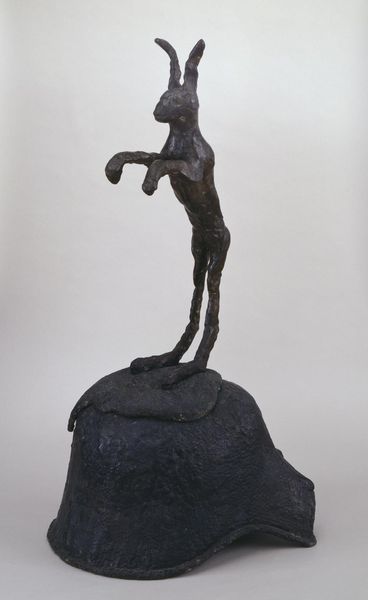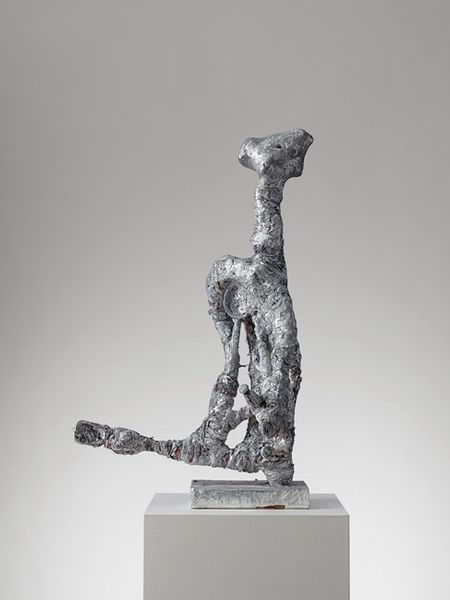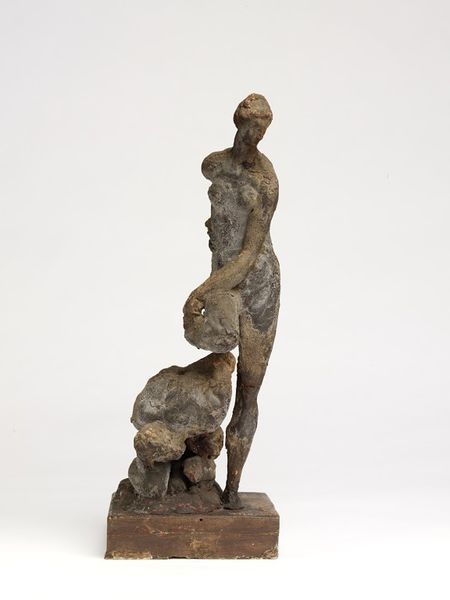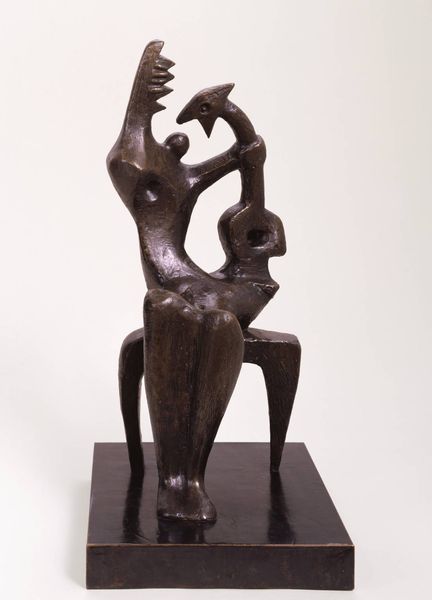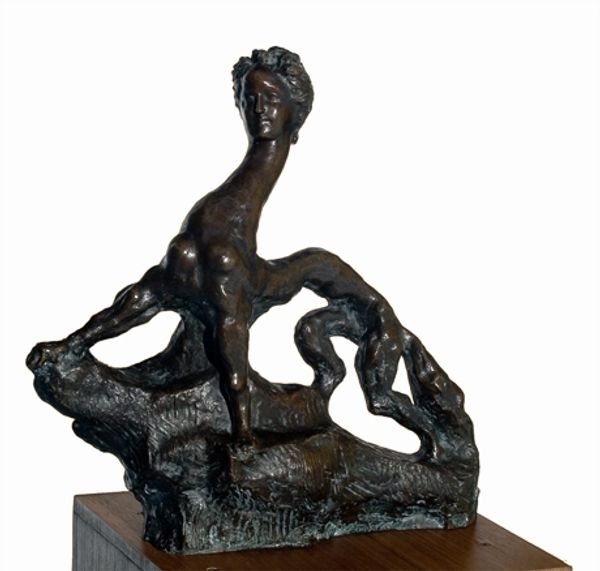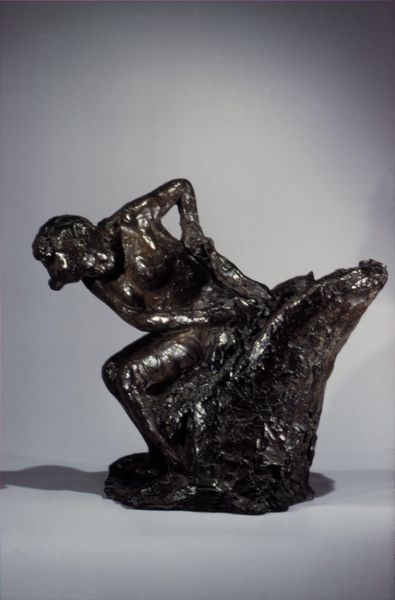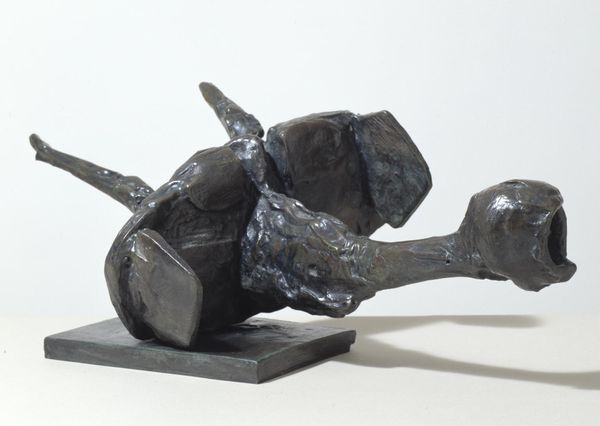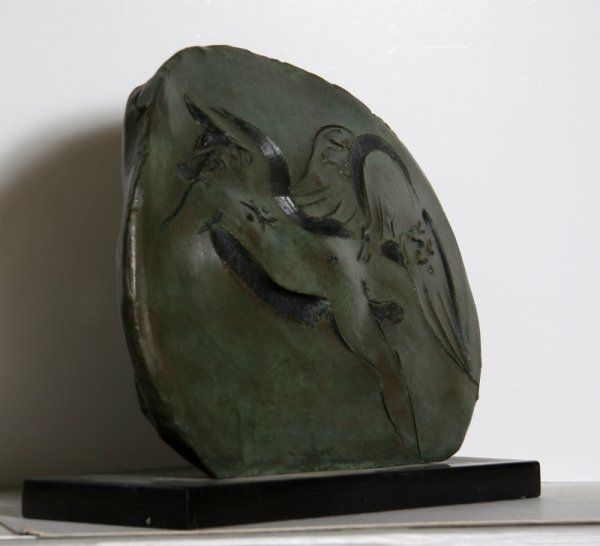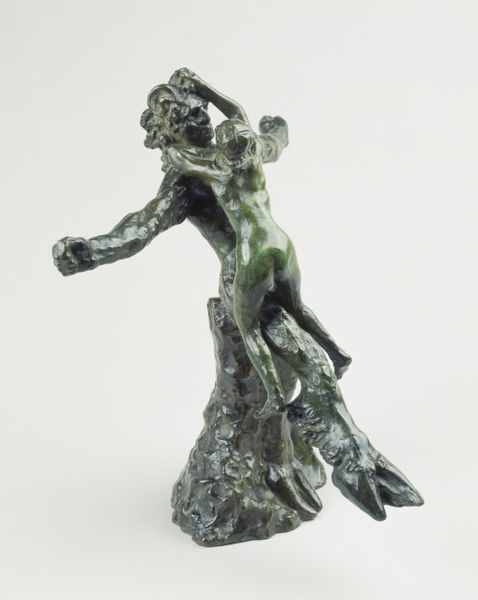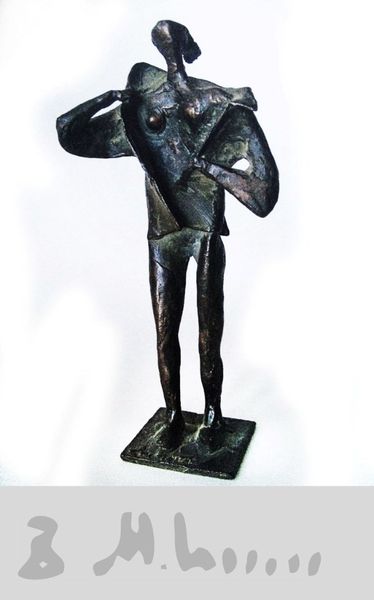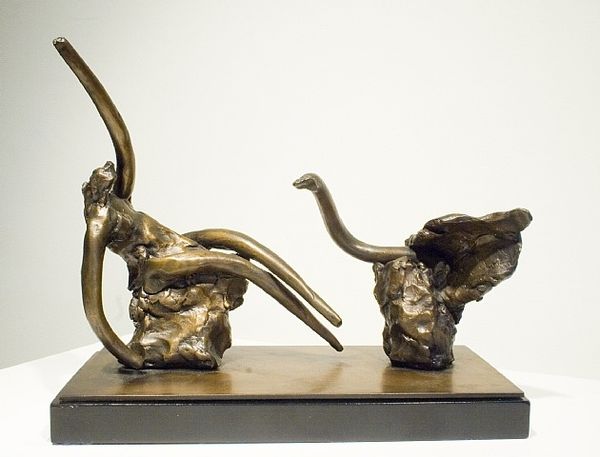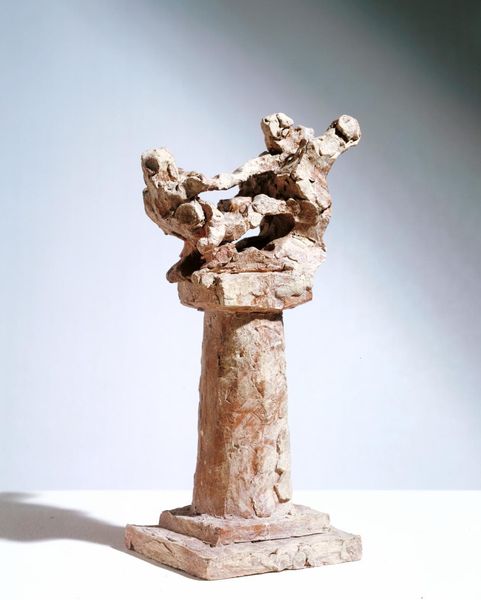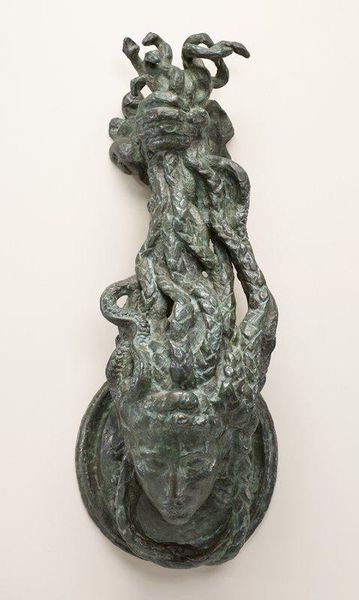
bronze, sculpture
abstract-expressionism
sculpture
bronze
figuration
form
sculpture
Copyright: David Hare,Fair Use
Editor: This is "Earth Wader," a bronze sculpture crafted by David Hare in 1946. I'm struck by its strange form, perched on what looks like a ceramic base, almost like a deconstructed body or some sort of archaic figure. How do you interpret this piece? Curator: Considering its creation in 1946, we should consider the lingering trauma and anxieties following World War II. Hare was associated with the Surrealists and later with Abstract Expressionism, both movements grappling with the human condition after unprecedented violence. How does the sculpture relate to institutional structures that have either celebrated, condemned, or failed to protect humanity? Editor: So, you see it as a response to the socio-political climate of the time? I hadn't considered the war's impact so directly on the abstract figure itself. I was more focused on the strangeness of the form. Curator: The strangeness is precisely where the impact lies! Note the distortion and fragmentation. It’s not merely about aesthetic innovation. Artists after the war questioned traditional representations of the body, perhaps finding them inadequate for expressing the collective trauma. This sculpture challenges us: what happens to figuration, to the human form itself, when the foundations of society are shaken? Is the white base part of a medical context? Is the whole sculpture suggesting regeneration? Editor: I see what you mean. The base looks a little bit like a healing pod. Curator: Exactly! And what implications might that have, thinking about power, institutionalization and trauma? It brings new questions to my reading, too. Editor: I’ll definitely be thinking about the socio-political dimensions of art more deeply after this! Thanks. Curator: It’s been a fruitful exploration for me too.
Comments
No comments
Be the first to comment and join the conversation on the ultimate creative platform.
